Final year project
Rhino - Improving safety and reducing anxiety for people with Olfactory… [Read more]
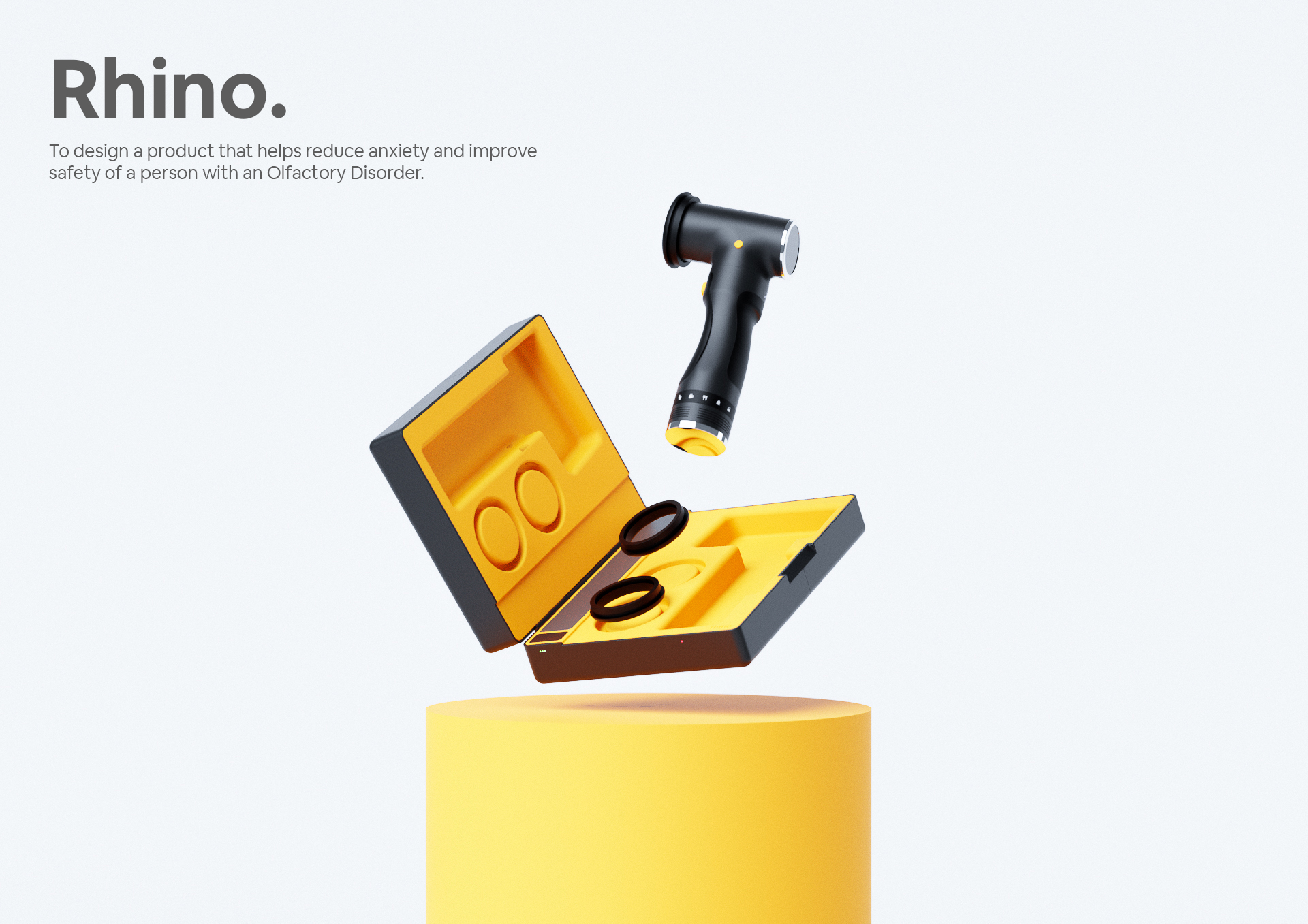
Rhino
Rhino is a handheld device enabling users that suffer from an olfactory disorder to regain the ability to "smell" potential dangers surrounding eating unsafe food and avoid anxiety about personal hygiene. Rhino uses a series of metal oxide sensors to identify and measure specific gases including Ammonia, Methane, and Co2, analysing the data to feedback to the user the potency of the smell and any potential hazards that it may indicate. Rhino has been designed in response to common issues Anosmic people experience, including the consumption of off food leading to illness, and increased social withdrawal and anxiety due to uncertainty about their body odours.
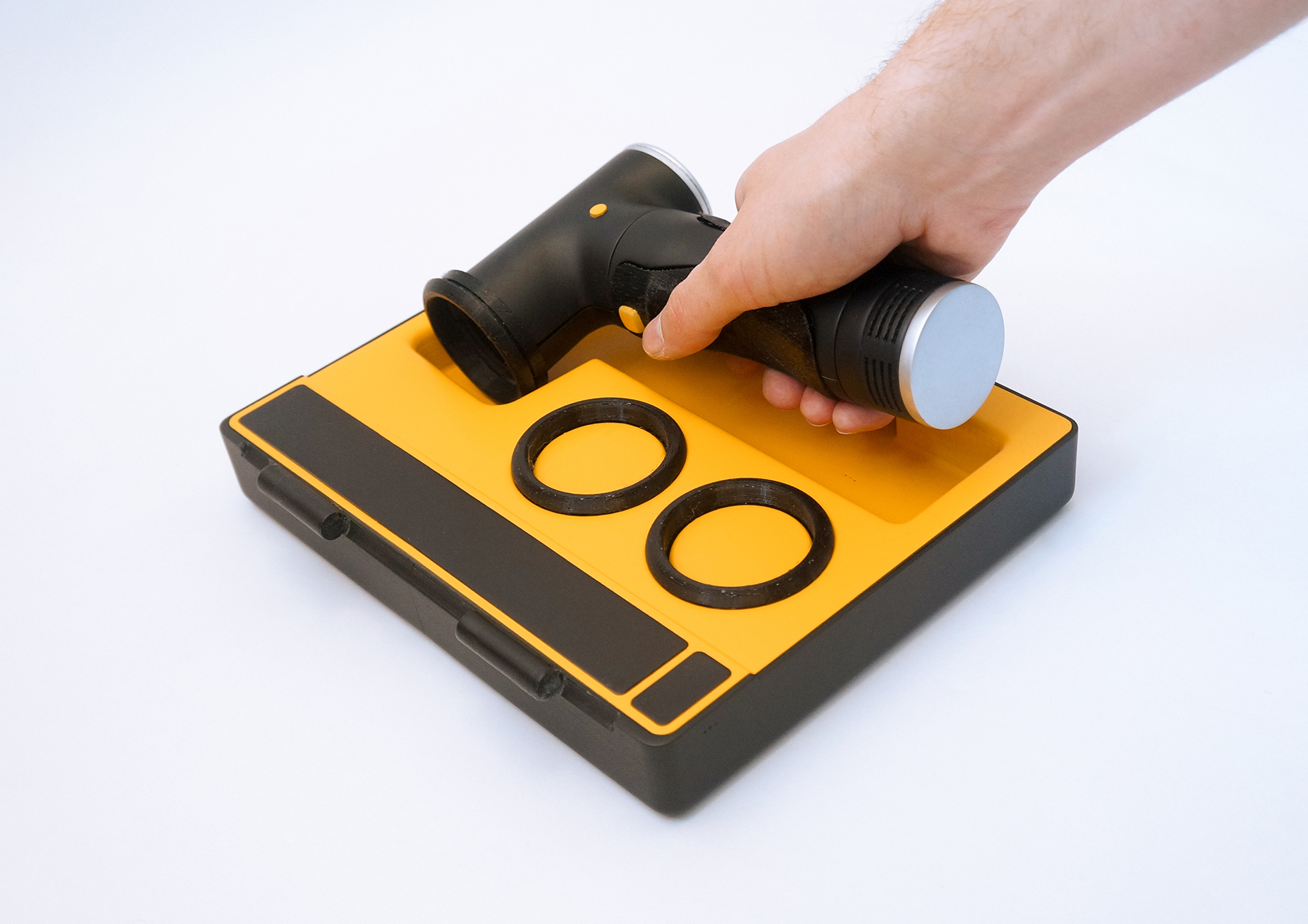

Rhino Model
An aesthetic model was made to perform ergonomic and aesthetic evaluations, while a functional model was made to test the efficacy of the metal oxide sensors. The model was produced through many iterative 3D printed versions, using both PLA and TPU.
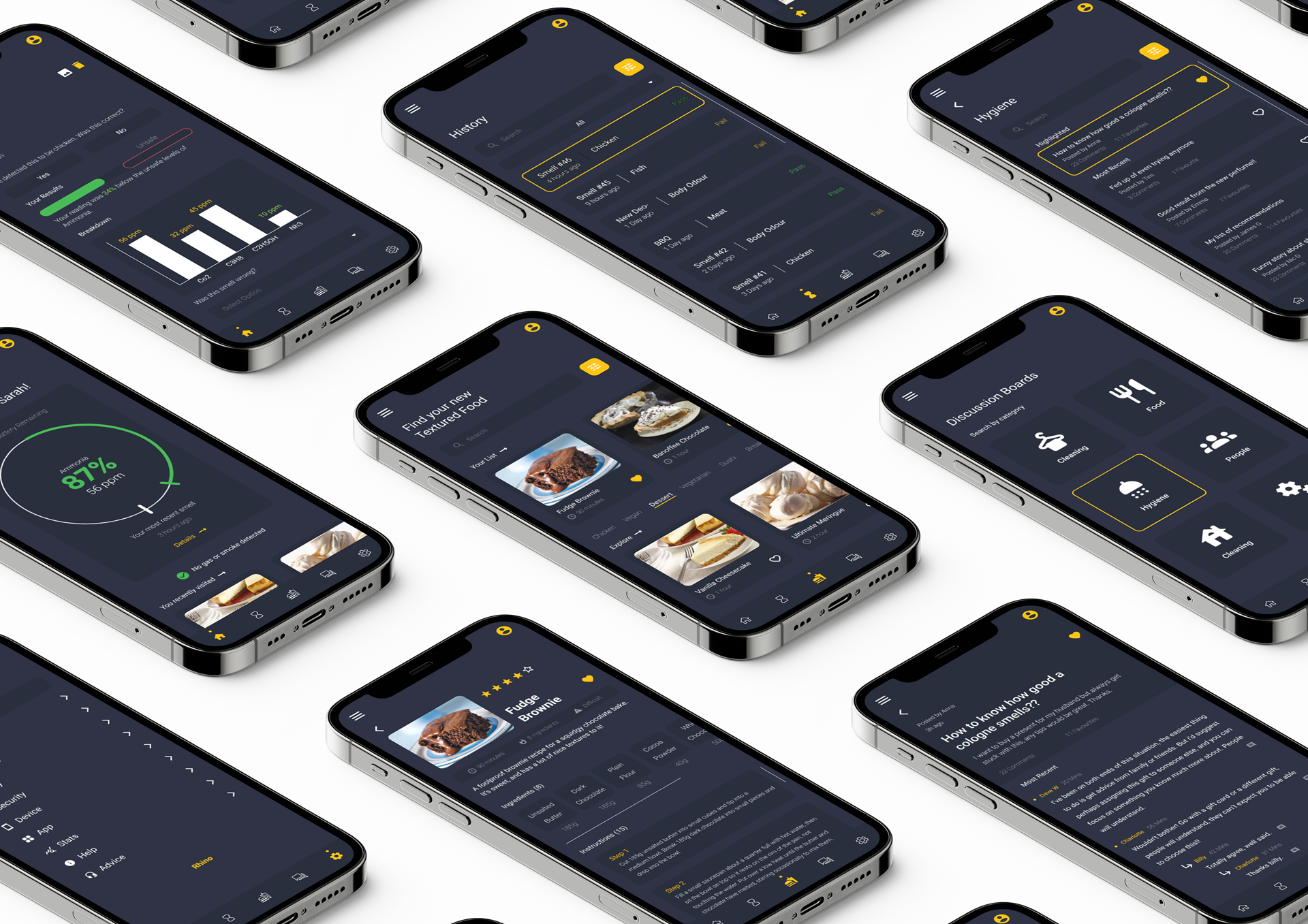

Companion App
The Rhino companion app enables users to track their smelling history and the current status of their device. The app features community aspects including a forum board for users to discuss shared issues, and a community-driven recipe board for home tested recipes designed around texture to cater for the unique way an Anosmic person tastes.
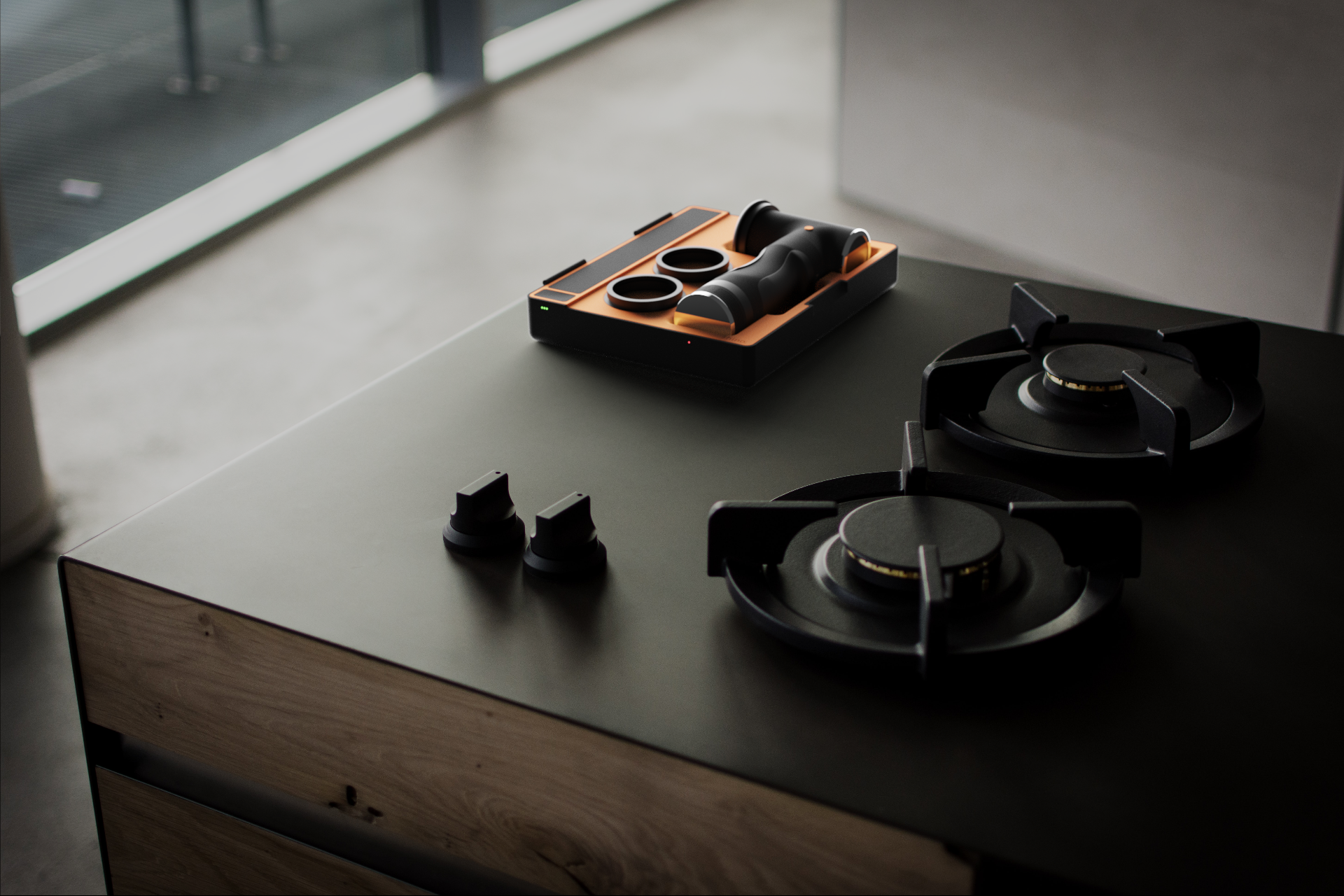

Context Shot
The device contains a series of metal oxide sensors encased within an airtight central column, in which the contaminated air is driven through by a motorised fan and heated up by a coiled heating element. The sensors are held within the ergonomically designed handle, which features over moulded rubber to provide a comfortable grip.
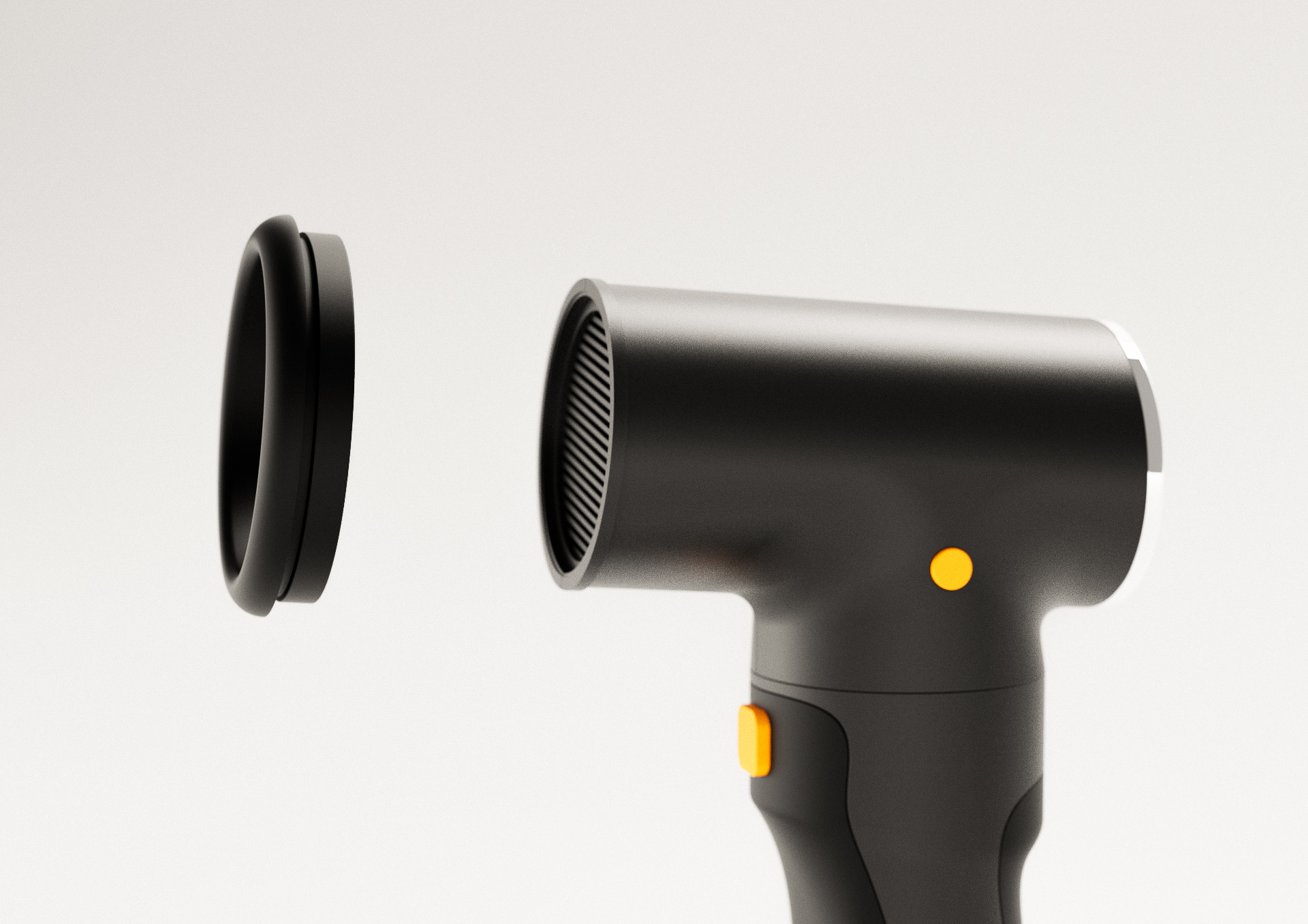

Removable Guard
The device features a swappable rubber guard which is used to protect the device from coming into contact with raw food or unclean surfaces, this guard is easily removed, allowing the user to clean and sanitise it after every use.
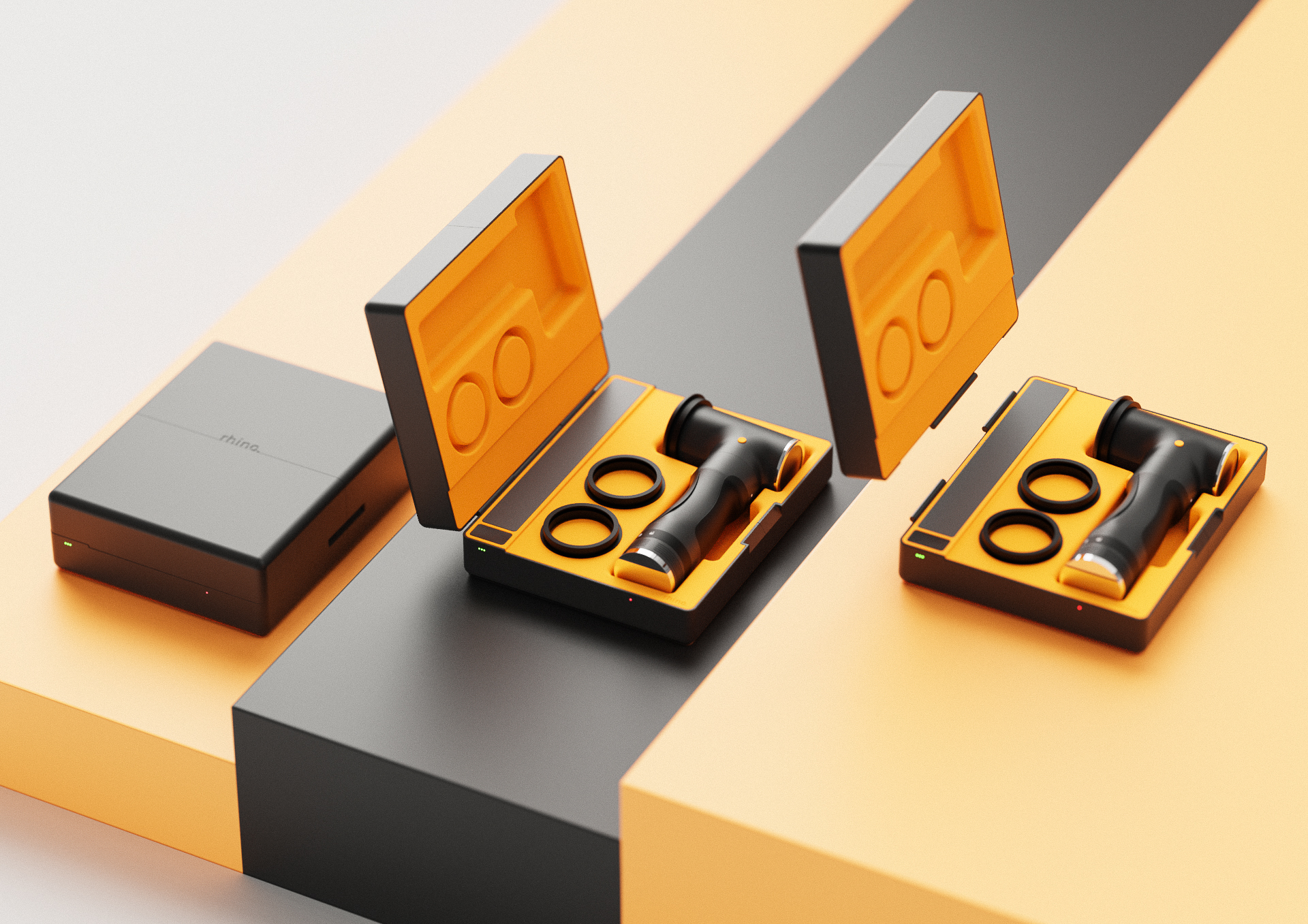

Magnetic Hinge
The base has a built-in natural gas alarm, inductive charging, as well as storage for two spare rubber heads. The charging base can be transformed into a travel case through a magnetic hinge. The travel cases lid is magnetically snapped to the hinge and rotates freely allowing the user to open and close the case, but remove the lid when it's not needed.
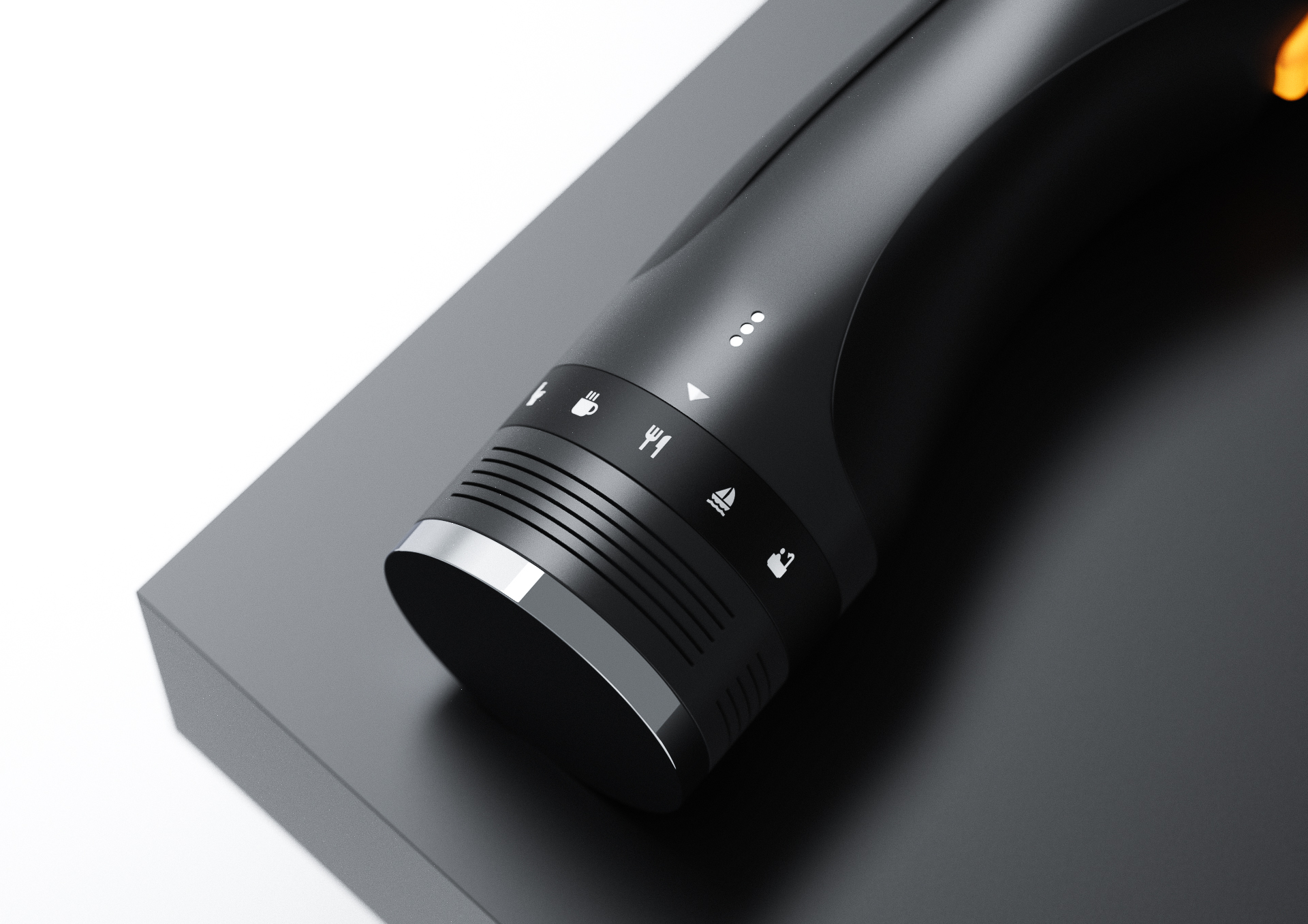

Interactive Dial
The device is designed for 5 separate modes: meat, fish, milk, body odour and air purity. The user chooses the relevant mode through a rubberised dial on the handle, which locks into place on every selection.
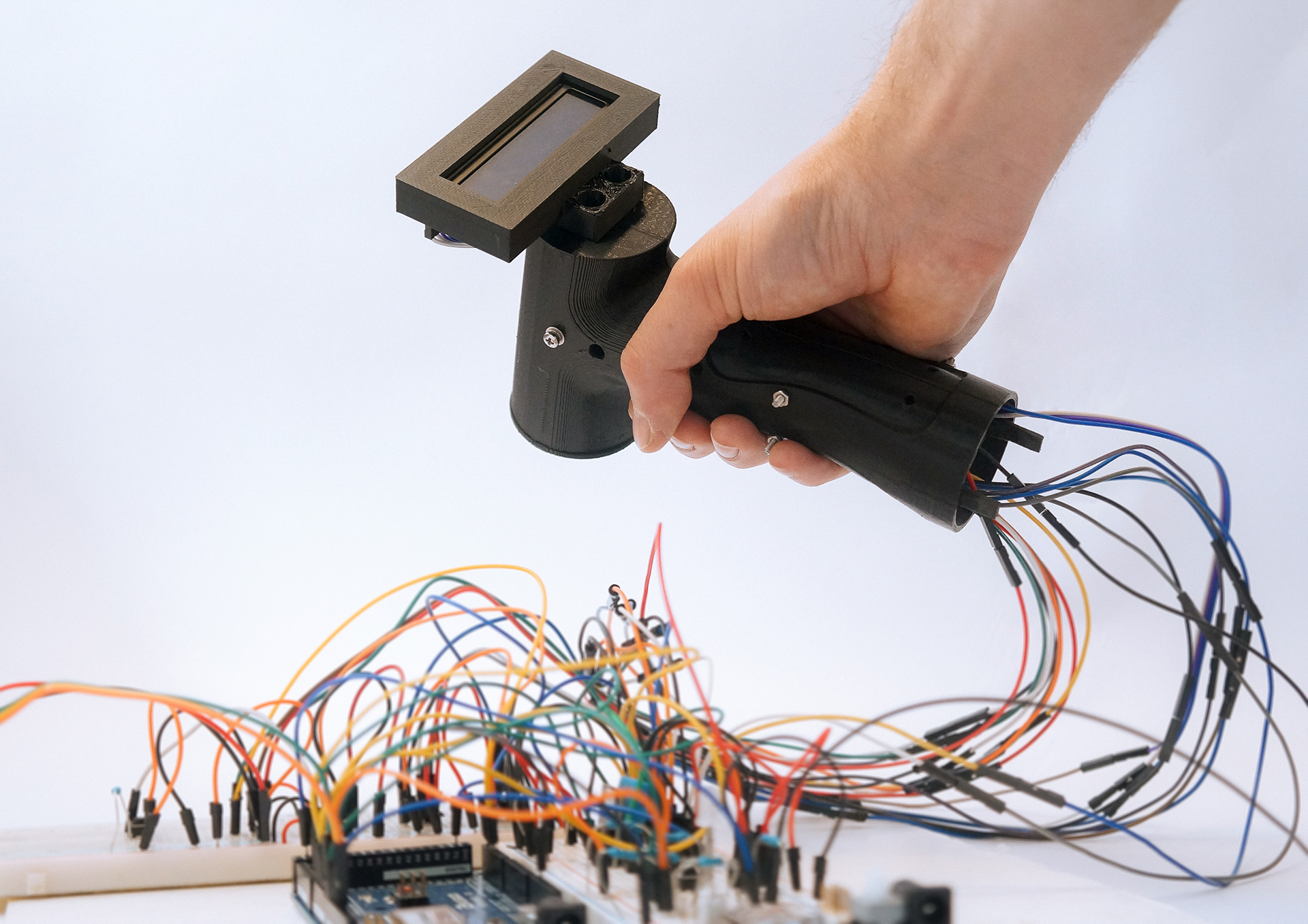

Functional Model
The metal oxide sensors could successfully measure the concentration of gases building up from bacteria multiplying in parts per million. It would inform the user if the food was safe to consume or not based on limits that were pre-determined through the testing of food at several stages of the decaying process. The same technology could be applied across personal hygiene and air quality.
Miles Bennett
Constructing impactful experiences through visual and functional problem solving.
I’ve always enjoyed solving complex problems through design, the more complex the problem, the greater the opportunity for innovation. I’m engrossed in all things visual design, which when combined with a research-focused and user centred design process, creates elegant solutions to the many challenges that need solving. I strive to get stuck in all aspects of the design process, from research to concept generation and development, through to implementation.
Living in an ever-growing world full of convoluted issues means the inherent problem-solving nature of design brings a rare opportunity to tackle challenges in all areas of life, combined with an enthusiasm for technology means starting my design career is an exceptionally exciting time. I aspire to work with cutting edge technology to deliver products that solve the core issues people face, packed in an appealing yet unique solution.
Final year project
Rhino - Improving safety and reducing anxiety for people with Olfactory Disorders.
Awards
'21 Diploma of Professional Studies
'20 Best Software Solution, New York Aiconics excellence in Ai award, Cambridge Consultants
Work Experience
Cambridge Consultants - UX Design Intern
A year-long placement as a UX design intern, undertaking several client-facing and internal projects, working closely with designers and engineers to research, design, and prototype user interfaces and the visual language for both web and mobile. My time here allowed me to venture and build skills in many secondary areas, including animation, software development, and virtual reality, as well as building skills in client-facing responsibilities such as presenting designs and running workshops.